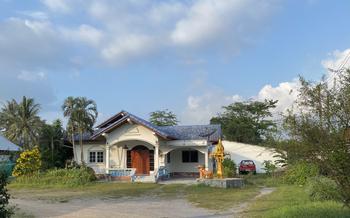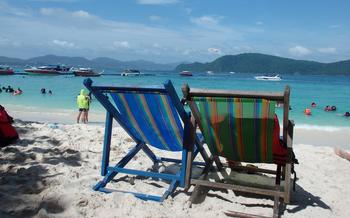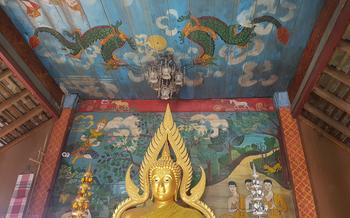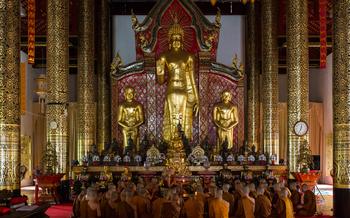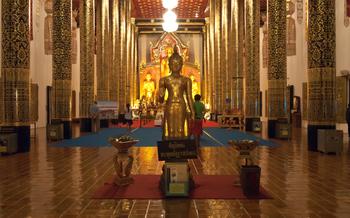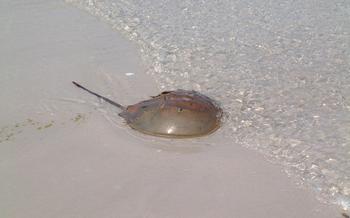
Ban Thung Hong Village
- Ban Thung Hong Village: A Hidden Gem in Phrae
- Getting to Ban Thung Hong Village
- Tips for Self-Guided Exploration
- Exploring the Village
- Meeting the Locals
- Traditional Houses
- Handicrafts and Textiles
- Shopping in Ban Thung Hong Village
- Homestays and Accommodation
- Festivals and Events
- Phrae City Highlights
- Responsible Tourism
- Insider Tip: Capture the Essence of Ban Thung Hong
Ban Thung Hong Village: A Hidden Gem in Phrae
Nestled amidst the lush countryside of Phrae, Thailand, lies the charming village of Ban Thung Hong. This hidden gem, with its unique architecture, vibrant culture, and warm hospitality, offers travelers an authentic glimpse into traditional Thai life.
Ban Thung Hong's history dates back centuries, when it was established as a trading post for teakwood and other forest products. Over time, the village grew into a thriving community, known for its skilled artisans and craftsmen. Today, Ban Thung Hong is a living testament to Thailand's rich cultural heritage, where traditional customs and lifestyles are still very much alive.
One of the most striking features of Ban Thung Hong is its unique architecture. The village is home to a collection of wooden houses, each with its raised bamboo platform, thatched roof, and intricate carvings. These houses, built using traditional techniques passed down through generations, are a testament to the skill and craftsmanship of the local people.
The villagers of Ban Thung Hong are renowned for their warm hospitality and friendly nature. They are always eager to welcome visitors and share their culture and traditions. Whether you're strolling through the village, visiting the local market, or simply enjoying a cup of tea with a villager, you'll be greeted with smiles and a genuine desire to make you feel at home.
Getting to Ban Thung Hong Village
To reach Ban Thung Hong Village, you'll need to first make your way to Phrae city, the provincial capital. From there, you have several transportation options:
- Songthaew (shared taxi): This is the most common and affordable way to get to the village. Songthaews can be found at the Phrae bus station and will take you directly to Ban Thung Hong Village for around 50-60 THB per person. The journey takes about an hour.
- Taxi: If you prefer a more private and comfortable ride, you can hire a taxi from Phrae city. The cost is around 300-400 THB for a one-way trip.
- Private car: If you have your own transportation, you can drive to Ban Thung Hong Village. The village is located about 45 kilometers from Phrae city.
Once you arrive in the village, you can easily explore on foot. The village is small and compact, so you can reach most places within a short walk.
Tips for Self-Guided Exploration
- Plan your visit: Before you go, take some time to research the village and its attractions. This will help you make the most of your time there.
- Wear comfortable shoes: The village has many cobblestone streets and unpaved paths, so it's important to wear comfortable shoes.
- Bring water and sunscreen: The weather in Phrae can be hot and humid, so it's important to stay hydrated and protected from the sun.
- Be respectful of local customs: When visiting the village, be respectful of local customs and traditions. Dress modestly and avoid speaking loudly or making disruptive noises.
Exploring the Village
Ban Thung Hong Village is a compact and easily navigable settlement, making it an ideal place to explore on foot. Begin your journey at the village entrance, where you'll be greeted by a row of charming wooden houses and friendly locals. Take your time wandering through the narrow lanes, admiring the intricate carvings and colorful facades of the traditional houses.
For a more immersive experience, follow one of the recommended walking routes that take you past key landmarks and hidden gems. The village center is home to the Ban Thung Hong Museum, where you can learn about the village's history and culture. Don't miss the opportunity to visit the local temple, Wat Phra Bat Ming Muang Worawihan, with its sacred Buddha image and stunning architecture.
Along the way, keep your eyes peeled for photo-worthy spots that capture the essence of the village. The wooden houses, with their unique architectural features, make for excellent subjects, as do the smiling faces of the locals. Head to the village outskirts to find scenic viewpoints that offer panoramic vistas of the surrounding countryside.
Meeting the Locals
The villagers of Ban Thung Hong are renowned for their warmth and hospitality, always welcoming visitors with open arms. They are eager to share their culture and traditions, offering a glimpse into their unique way of life. Visitors can engage in meaningful conversations with the locals, learning about their history, customs, and beliefs. There are opportunities for cultural exchange, such as cooking classes, textile workshops, and guided tours led by local experts. These experiences provide a deeper understanding of the village's heritage and allow visitors to connect with the community on a personal level. Local tour guides can be hired to accompany visitors around the village, providing insights and anecdotes that bring the village's stories to life. These guides are often fluent in English and can help visitors navigate the village and communicate with the locals.
Traditional Houses
The traditional houses in Ban Thung Hong Village are a testament to the village's rich cultural heritage. Built using locally sourced materials and traditional techniques, these wooden houses showcase unique architectural features that have been passed down through generations.
Unique Architectural Features
The houses are constructed on raised bamboo platforms, elevating them above the ground and providing protection from moisture and insects. The walls are made of wooden planks, often adorned with intricate carvings and paintings that depict scenes from everyday life or traditional stories. The roofs are thatched with dried grass or leaves, providing insulation from the heat and rain.
Raised Bamboo Platforms
The raised bamboo platforms serve several purposes. They elevate the houses above the ground, providing protection from flooding during the rainy season. They also create a shaded and airy space underneath the house, which is often used for storage, cooking, or relaxing.
Thatched Roofs
The thatched roofs are an iconic feature of the traditional houses in Ban Thung Hong Village. Made from dried grass or leaves, they provide excellent insulation, keeping the houses cool during the hot summer months and warm during the cooler winter months. The roofs are also sloped to allow rainwater to drain easily, preventing damage to the house.
Interior Design and Furnishings
The interiors of the traditional houses are simple and functional. The main living area is typically a large, open space with a raised platform for sleeping. The walls are often decorated with colorful textiles and handicrafts, adding a touch of warmth and personality to the space.
Handicrafts and Textiles
Ban Thung Hong Village is renowned for its intricate textiles and woven crafts, which have earned a reputation for their exceptional quality and unique designs. The villagers have preserved traditional techniques that have been passed down through generations, using natural materials such as cotton, silk, and bamboo to create beautiful and functional items.
Visitors to the village can witness the artisans at work in their workshops, where they skillfully weave and dye fabrics using traditional methods. The vibrant colors and intricate patterns of the textiles are a testament to the skill and dedication of the local craftspeople. From delicate scarves and shawls to intricate cushion covers and wall hangings, there is a wide variety of handmade products to choose from.
Supporting local artisans by purchasing their handicrafts not only ensures the preservation of these traditional skills but also contributes to the economic well-being of the community. Visitors can find a variety of handmade souvenirs and handicrafts in the village, including textiles, woven bags, jewelry, pottery, and wood carvings.
When shopping in Ban Thung Hong Village, it is customary to bargain with the vendors. This is a friendly and interactive process that allows visitors to connect with the artisans and learn more about their products. By engaging in this cultural practice, visitors can show their appreciation for the handmade items and support the local economy.
Shopping in Ban Thung Hong Village
Shopping in Ban Thung Hong Village is a delightful experience that allows you to take home unique handmade souvenirs and support the local economy. The village is renowned for its intricate textiles and woven crafts, which are meticulously created using traditional techniques passed down through generations.
As you stroll through the village, you'll find an array of shops and stalls displaying a variety of handicrafts. From colorful scarves and shawls to intricate handbags and accessories, there's something for every taste and budget.
Tips for Shopping in Ban Thung Hong Village:
- Bargaining is acceptable and even expected in the village. Don't be afraid to negotiate a fair price, but always do so respectfully.
- Support local artisans by purchasing directly from them. Many of the craftspeople in the village work from their homes, so visiting their workshops is a great way to learn about their process and support their livelihoods.
- Look out for popular items such as hand-woven blankets, cushions, jewelry, and home décor. These make for excellent souvenirs or gifts for loved ones back home.
Homestays and Accommodation
Staying with a local family in Ban Thung Hong Village is an unforgettable experience that offers a glimpse into the village's unique culture and traditions. Homestays are typically simple but comfortable, and the hosts are incredibly welcoming and hospitable. Many homestays offer a variety of amenities, such as traditional Thai meals, cooking classes, and guided tours of the village.
When booking a homestay, it's advisable to do so in advance, especially during peak tourist season. Prices vary depending on the homestay and the services offered, but generally, the rates are very affordable. It's also important to note that some homestays may have limited English proficiency, so it's helpful to have a basic understanding of Thai or to travel with a guide.
Staying in a homestay is a great way to connect with the locals, learn about their way of life, and support the community. It's an enriching experience that will create lasting memories for visitors.
Festivals and Events
Ban Thung Hong Village is renowned for its vibrant festivals and events, which showcase the rich cultural heritage and traditions of the local community. The most notable festival is the Wan Lai Khao Festival, held annually in October or November. During this festival, villagers gather to celebrate the rice harvest and express gratitude for the bountiful crops. The festival features colorful parades, traditional performances, and a variety of activities, including rice pounding competitions, cooking demonstrations, and traditional games.
Another significant event is the Songkran Festival, celebrated in April to mark the Thai New Year. During this festival, villagers participate in water splashing, a symbolic gesture of washing away bad luck and welcoming good fortune. The streets are filled with laughter, music, and water fights, creating a lively and joyous atmosphere.
Visitors to the village during these festivals have the opportunity to immerse themselves in the local culture, witness the vibrant traditions, and interact with the friendly villagers. It is an excellent time to experience the unique charm and hospitality of Ban Thung Hong Village.
Phrae City Highlights
While Ban Thung Hong Village is the main attraction, Phrae city, located about an hour away, is worth exploring for its rich history and cultural heritage. Must-visit attractions in Phrae city include:
-
Wat Phra Phutthabat Si Chom Thong: This temple is home to a large bronze Buddha footprint, considered one of the most sacred in Thailand.
-
Phrae City Pillar Shrine: This shrine houses the city pillar, a sacred object believed to bring good fortune and prosperity to the city.
-
Wong Buri Forest Park: Located just outside the city, this park offers stunning views of the surrounding countryside and is a great spot for hiking and nature walks.
-
Nan River: Take a leisurely boat ride along the Nan River, which flows through the city, to admire the beautiful scenery and visit riverside temples and villages.
-
Night Market: Experience the vibrant night market, where you can find a variety of local delicacies, handmade crafts, and souvenirs.
Consider taking a day trip from Ban Thung Hong Village to explore these attractions and immerse yourself in the unique charm of Phrae city.
Responsible Tourism
As you explore Ban Thung Hong Village, remember to practice responsible tourism to preserve its unique culture and environment. Respect the local customs and traditions, and avoid any actions that may be disrespectful or disruptive. Minimize your environmental impact by reducing plastic waste, conserving water and energy, and supporting sustainable practices. Choose to stay in homestays or guesthouses that are committed to community-based tourism initiatives, ensuring that your visit directly benefits the local community. By embracing responsible tourism, you can help protect the village's heritage while creating a positive impact on the lives of its residents.
Insider Tip: Capture the Essence of Ban Thung Hong
Secret Spot for Picturesque Views: Venture to the village outskirts to find a hidden viewpoint overlooking the lush green rice paddies. This spot offers breathtaking panoramic views of the village nestled amidst rolling hills.
Unique Village Experience: Join a guided tour with local artisans to learn about the traditional weaving techniques passed down through generations. Try your hand at weaving your own piece of fabric and take home a unique souvenir.
Local Delicacies: For a taste of authentic village cuisine, head to the local market. Indulge in freshly made northern Thai dishes, including the famous "Khao Soi" (northern-style curry noodle soup) and "Sai Oua" (northern-style grilled sausage).
Capture the Village Charm: To capture the essence of Ban Thung Hong, visit during the early morning or late afternoon when the golden sunlight casts a warm glow on the wooden houses, creating a picturesque scene.
Hidden Temple: Discover Wat Phra Non, a hidden temple located in the nearby forest. This lesser-known temple offers a serene atmosphere and stunning views of the surrounding landscape.

